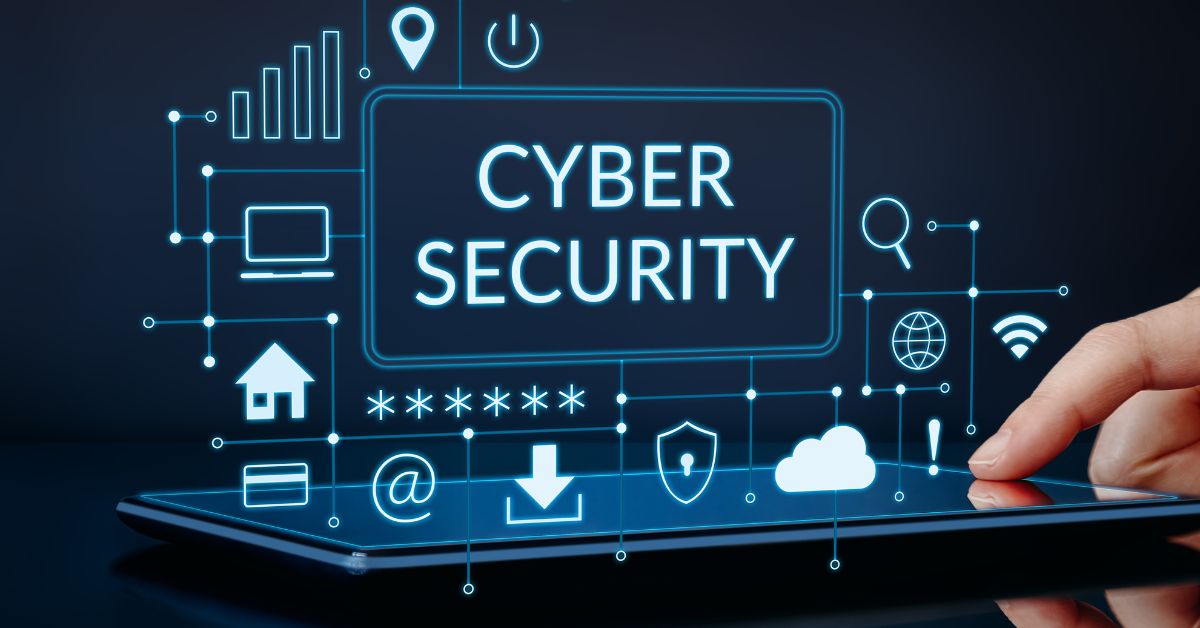Your bag is empty
Already have an account? Log in to check out faster.
Already have an account? Log in to check out faster.

Cybersecurity involves the practice of protecting systems, networks, and data from digital attacks. It aims to defend these digital assets against unauthorised access, theft, and damage. As our reliance on digital platforms increases, so does the importance of robust cybersecurity measures. It's no longer just about protecting individual systems, but also about securing large networks and cloud-based infrastructures.
Patching and updates are fundamental aspects of maintaining strong cybersecurity. They are the primary means by which software developers address vulnerabilities in their products. Vulnerabilities could be as simple as bugs that cause a program to run inefficiently, or as serious as security loopholes that could be exploited by cybercriminals. By applying patches and updates, users can close these security gaps, improve functionality, and maintain the integrity of their systems and data.
In this blog post, we will delve deeper into the world of patching and updates, exploring what they entail and how they work. We will discuss the potential risks of neglecting these important tasks, including real-world examples of serious breaches that have occurred due to outdated systems. We will also provide tips and best practices for effectively managing patching and updates. The aim is to underscore the crucial role these measures play in reducing the risk of security breaches and ensuring robust cybersecurity.

Patching is a process that involves the addition of code to an existing software program to fix a bug, improve functionality, or close a security loophole. Patches are often small and targeted, addressing a specific issue in the software.
Updates, on the other hand, are more comprehensive modifications to software. They might include multiple patches, new features, and performance improvements. They may also include security enhancements designed to protect the software from new or evolving threats.
Software developers regularly monitor their products for bugs and security vulnerabilities. When they discover a problem, they work to develop a solution, which is then released in the form of a patch or an update.
Users typically receive notifications about available updates from their software or operating systems. Some systems are set up for automatic updates, where the system downloads and install the update without user intervention. In other cases, the user might have to manually start the update process.
Patches and updates are typically distributed over the internet and are designed to integrate seamlessly into the existing software, replacing old code with new, improved code. This process requires a restart in many cases so that changes can take effect.
Patching and updates play a crucial role in cybersecurity by addressing vulnerabilities in software that could be exploited by hackers. Many cyber attacks take advantage of known vulnerabilities in software that users have failed to patch or update.
When a software update is released, it often includes fixes for these vulnerabilities. By applying these updates promptly, users can protect their systems from known threats. Similarly, patches are often released in response to the discovery of specific security vulnerabilities. By applying these patches, users can protect their systems from targeted attacks.
Furthermore, updates often include enhancements to the software's built-in security features, providing an additional layer of protection against cyber threats. This might involve improvements to firewalls, enhancements to virus detection algorithms, or the addition of new security features.
Overall, the consistent application of patches and updates is one of the most effective strategies for maintaining strong cybersecurity.

When software is developed, it isn't always perfect. Over time, vulnerabilities and security gaps are discovered. These can be as simple as a coding mistake that allows a program to behave unexpectedly or a complex loophole that lets an attacker bypass security measures. The potential vulnerabilities can range from ones that simply affect software functionality to others that expose sensitive user data. Even the most seemingly insignificant of these can be exploited and can cause substantial harm if not addressed.
Outdated systems and software are prime targets for cybercriminals. Without timely patches and updates, systems become increasingly vulnerable to attacks. Cybercriminals are constantly on the lookout for these vulnerabilities. They use sophisticated methods to exploit these gaps, such as phishing attacks, ransomware, or direct hacking. For example, they may inject malicious code into the system that can steal sensitive information, disrupt operations, or even gain control of the entire system. It's a continuous cat-and-mouse game, with developers trying to fix vulnerabilities and criminals looking to exploit them before they are fixed.
Equifax Data Breach (2017): In one of the most significant cybersecurity breaches in history, credit bureau Equifax was attacked, leading to the exposure of sensitive data belonging to 143 million consumers. The attack was made possible due to a web-application vulnerability that Equifax had failed to patch in a timely manner.
WannaCry Ransomware Attack (2017): This global cyberattack affected over 200,000 computers across 150 countries. The WannaCry ransomware exploited a known vulnerability in Microsoft's Windows operating system. Despite Microsoft having released a patch for the vulnerability two months prior to the attack, many users and organisations had not applied it, leaving their systems exposed.
The Heartbleed Bug (2014): This security bug in the OpenSSL cryptography library, widely used in the Transport Layer Security (TLS) protocol, allowed anyone on the Internet to read the memory of systems protected by the vulnerable versions of the library. Despite a patch being available, many systems remained vulnerable for a long time due to neglect in updating.
These examples highlight the severe consequences of neglecting patching and updates, underscoring the necessity for organisations and individuals to keep their systems updated and patched in a timely manner.

Cybersecurity is a continually evolving field. New vulnerabilities and threats surface daily, making it crucial for individuals and organisations to stay informed about the latest threats. This can be achieved through a combination of methods such as subscribing to cybersecurity newsletters, following relevant blogs and forums, and being part of cybersecurity communities. By doing so, you'll be in a better position to understand the threats you are up against and what specific updates or patches need to be prioritised.
Patching and updating software promptly is essential in mitigating security risks. Each delay can increase the chance of a cyberattack as hackers are consistently on the lookout for vulnerabilities they can exploit. Recent studies have shown that the majority of cyber attacks occur due to known vulnerabilities that have not been patched timely. Therefore, whether it's a minor software update or a critical patch, installing them as soon as they're available reduces the window of opportunity for attackers.
Regularly check for updates: Set a routine to manually check for software updates, as some might not notify you of their availability.
Prioritise updates: Not all updates are equal. Some are critical for security, while others may offer functional improvements. Understand the nature of the update and prioritise accordingly.
Educate your team: If you're managing an organisation's cybersecurity, it's important to educate your team about the significance of updates and encourage them to keep their systems up-to-date.
Use reliable sources: Always download patches and updates from reputable sources, usually the software vendor's official website, to avoid malicious software.
Test updates: If possible, especially in a corporate environment, test updates on a non-production system first to check for potential issues before wide-scale implementation.
Many software and systems today come with an option to enable automatic updates. This feature is beneficial for individuals and organisations as it lessens the burden of manually tracking and applying updates. However, care should be taken with critical systems or enterprise networks where an update may inadvertently disrupt operations or compatibility. In such cases, a more managed approach may be warranted, including vetting and testing updates before they are widely deployed.
Throughout this blog post, we have highlighted the vital role patching and updates play in our digital lives. We've explored how they function as a first line of defence against potential security threats. These protective measures address vulnerabilities, close security loopholes, and enhance the overall performance and security of systems and software. They are a proactive approach to cybersecurity, tackling potential issues before they become a significant problem.
While understanding the concept of patching and updates is essential, their effective implementation is even more crucial. Regular and timely updates can drastically reduce the risk of security breaches, protecting sensitive data and systems from unauthorised access. Outdated software and systems are akin to open doors for cybercriminals, allowing them to exploit known vulnerabilities effortlessly. By prioritising regular updates, we can keep these doors firmly shut and ensure the integrity of our digital assets.
As our dependence on digital platforms grows, so does the importance of comprehensive cybersecurity practices. Patching and updates are no longer an option but a necessity in this digital age. Remember, cybersecurity isn't a one-time effort but an ongoing process, and effective patch and update management forms a key part of this process.
Let's prioritise staying informed about the latest security threats and updates, applying patches promptly, and maintaining a consistently updated digital environment. This isn't just about protecting our systems today, but also about future-proofing them against the emerging cyber threats of tomorrow. By doing so, we can significantly strengthen our cybersecurity and navigate the digital world with increased confidence and peace of mind.
Nucleus:An intelligence-driven vulnerability management program that identifies and prioritises your vulnerabilities, allowing focused allocation of resources and providing a clear understanding of your security posture.
Terranova: A comprehensive training approach that enhances an individual's cybersecurity awareness and practices. It emphasises on creating a 'human firewall', employing security protocols, regular software updates, password management, and workforce training.
Microsoft Defender for IoT: A robust solution to identify, detect, and protect against threats in OT and IoT environments. It offers real-time threat detection, anomaly identification, seamless integration with existing security infrastructure, and an intuitive interface for real-time management.
